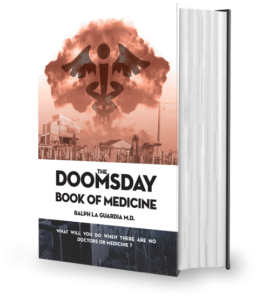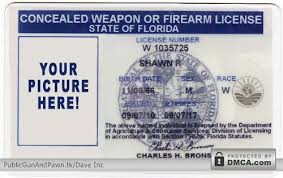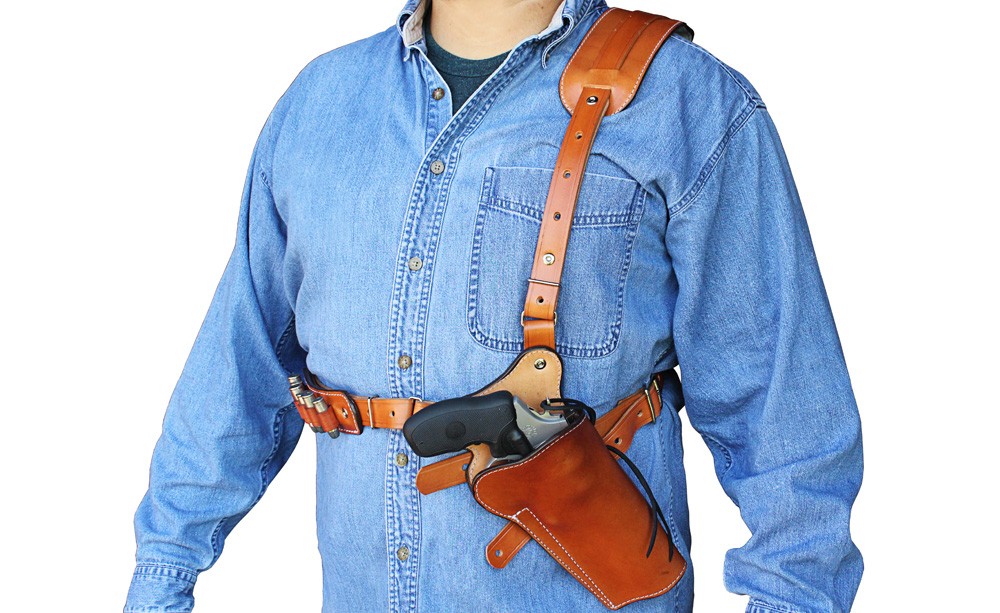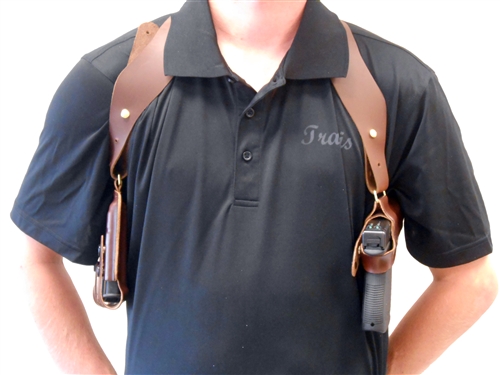Concealed Carry, A Beginners Guide
The number of concealed carry permits in America has exploded over the last few years. According to data from the Crime Prevention Research Center, as of May 2017, over 15 million people have their license to carry. Up from 11 million in 2014. The world is volatile, people feel unsafe and more than ever, they are stepping up and taking the responsibilities of protecting themselves and their families.
The world as we know it, may not ever end. I know, I know, but it is a reality. Some call prepping a lifestyle, we like to be prepared for emergency situations, whether it be an event Mother Nature throws at us, like hurricanes or earthquakes. Or something the politicians throw at us like causing an economic disaster.
Are you prepared for something like an active shooter event or terrorist attack? How about an armed robbery? You should be, as it is something I believe is more apt to happen than most of the other SHTF situations. It could be the heroin junkie sitting in the dark part of the parking lot waiting for you because he has no money and has scoped out your nice car believing he now has a source to get the cash for his next fix.

Get this book now and learn such facts as: The Plant You Can Use as a Diuretic But Also To Make a Great Wine! Good news? It grows all over the place. Details here


I applaud everyone that has taken the steps to acquire their carry permits. Right now there are also 13 states that do not require its residents to have a permit to carry concealed. This is referred to as Constitutional carry, and it is catching on. I believe more states will be joining the others adopting Constitutional carry in the near future. Concealed carry IS a lifestyle, much like prepping. It shouldn’t be something taken as lightly “a hobby”. If you are going to carry around a loaded weapon everywhere you go and you have to have the skill to effectively use it and that will require some sacrifice.
Ok, you have your permit or your state adopted Concealed carry before you decide to go out and buy a Desert Eagle .50AE, I highly recommend you get some training under your belt. If you have never owned a handgun, or have owned them, but never carried one concealed, you NEED to get educated. A basic pistol class will educate the novice in perhaps the most important topic in the handling of pistols, safety. It will go into the basics of marksmanship. It will also give the critical information needed to point the first time buyer in the right direction in terms of what to start looking for in a weapon to suit them, given the myriad of choices.
If your class is a more comprehensive one, the instructor may have some different actions and calibers for the students to try so as to give an individual first-hand experience on what a 12-pound double-action trigger feels like on a revolver as opposed to a 5-pound trigger on a striker-fired pistol. The difference in recoil between a .357 mag and a 9mm.
Buying and carrying a weapon you feel comfortable with is a very individual thing. I hate it when I’m in a gun store and a small framed woman walks up to the counter and says she’s looking for a gun for home defense. Something that’s easy to use because she has no experience. And the salesman says,”oh you need this 12 gauge pump action with 00 buck”. There is nothing more moronic and sales people like that should be fired. That’s why it’s important to have an educated idea of what you want before you walk into a gun store. It would be ideal for you to try as many different models of guns as possible as it is a very personal choice.

If You Are Diabetic THIS Book teaches you what Is Essential For Your Survival Medicine Chest. Get your copy here.
Your purchase doesn’t end with the gun.
The next critical piece of equipment is a good holster. This will take into account lots of different things. Your body type. Are you in shape or do you have a spare tire around your waist? How’s your mobility? Can you access your weapon quickly and smoothly where you plan to carry it? How do you dress? If you decide this is the lifestyle you want to have, you will find that your wardrobe choices will have to change. You will have to dress around your gun, not the other way around. Concealed means concealed. You shouldn’t have to worry about moving certain ways for fear of either exposing your weapon or printing your weapon through your clothes. Unfortunately, it is a trial and error thing. Everybody is built different and what works for your buddy may not work for you. Which leads me to the next point.
Where do you plan to carry?
There are numerous places on the body to carry, but as a NRA instructor and over 20 years concealed carry person myself, I recommend two places over others and I do have my preference as to which I think is better. For starters let’s begin with small of the back. Terrible. I don’t recommend this position to carry concealed no matter how many times you see it in the movies. You have almost zero control of your weapon. It’s not conducive to a fast draw. Its retention properties are terrible. You can’t even tell if your shirt pulled up over it and there it is for everyone to see while you’re walking around the department store. If you happen to either slip or get pushed down in a scuffle and land on the ground with a gun in the small of your back, you could suffer serious damage and even take yourself out of the fight.

 Shoulder holster.
Shoulder holster.
Not a huge fan but I can see some small instances where one could be the right choice. Those instances are someone that uses a wheelchair. Or someone who spends lots of time driving. The things I don’t like about them are that you generally cover yourself with the muzzle when you draw from them. Especially with a horizontal shoulder carry. You can only use them with open front garments. Which really limits what you can wear to conceal it. Handgun hunting is another activity where I could see a shoulder holster being used. Usually, the handguns used to hunt with are large and lots of times even wear an optic. Holsters that lay the gun across the chest are the typical variety of shoulder rigs you see here. However, during hunting activities, one is not usually concerned with concealment.

Get this book now and learn such facts as: The type of salt that can be used for Sprains, Muscle Pain, Muscle Spasm, Constipation, Cardiac Conditions, and even as a Sedative. Find more details here
Ankle carry.
Good for carrying a backup only. Very slow to draw. Somewhat uncomfortable. This is where wardrobe choices are important, the type of pants will come into play. The leg opening will have to be large enough to pull up and over the gun. The type of gun is also limited with carrying in this position in that you won’t be able to carry full sized or even compact sized pistols. Subcompact and micro pistols will be the extent of what could be carried on the ankle.
Strong side hip.
This is one of the two positions I recommend. The majority of holsters made are designed for this position of carry. There is outside the waistband and inside the waistband. That is up to the individual. Although inside the waistband generally conceals the pistol better than outside because it hugs the body tighter.
Advantages to this carry position are that it’s fast. You can also wear closed front garments as well as ones that open from the front. Strong side hip also allows the user to have some retention ability. Meaning if someone tried to take the gun from the holster, the user has a fighting chance to retain it, unlike small of the back. If you carry inside the waistband you may have to buy your pants one size larger depending on the size of the weapon you want to carry.
Appendix inside the waistband.
This is my preferred method of carry. There are lots of detractors on the internet regarding appendix carry. However, I doubt most of those people carry on a regular basis. The popular saying is, you’ll shoot your junk off. Well sure, if you are untrained, it’s a possibility to shoot yourself drawing a gun from any position! I’ve been carrying this way over 20 years.
I have drawn and fired hundreds of thousands of rounds and I have never shot myself. I prefer this method because it is the best way to conceal a larger pistol. It is the fastest draw. Open or closed front garments can be worn. It provides the best in terms of retention abilities. If you happen to wind up on the ground, you can still access your gun. And you can access your weapon with either hand. If you are exploring this option, don’t let what others say to persuade you.
Try it for yourself, give it a fair chance and you will most likely carry this way. It, however, doesn’t work with all body types. If you are somewhat thick in the middle, this method may be uncomfortable for you. There are other methods of concealment like shirts and belly bands etc. I’ve decided to cover the most popular methods because others are more niche type methods and represent only a very small portion of the market. However, I encourage you to research alternate methods of concealing a pistol because you may have a unique situation.
The two most popular types of holster materials are leather and Kydex. Both have advantages and disadvantages. I personally prefer kydex because there is no break-in period, they are virtually maintenance-free, they are impervious to cleaning chemicals, sweat, and moisture. They can have an adjustable retention and remain open for re-holstering with one hand. Some things against kydex are it generally doesn’t feel good against the skin. Depending on where it’s worn they are notorious for hot spots. Some say they are bulky. They can be noisy when drawing or re-holstering.
Leather holsters are comfortable.
They are ninja silent when drawing or re-holstering. After the holster is broke in, it wears on the gun like a glove, usually providing adequate retention. You can get, depending on how much you want to spend, exotic type leathers from stingrays and sharks to ostrich and alligator. Some cons are that they do require a break-in period. During this period the gun will not draw as smoothly. You will have to maintain the leather. Just like a good pair of boots, you will have to apply conditioner and even waterproofing agents to them from time to time so they will last.
You also have to take into consideration what you use for the leather treatment because it could ruin the finish of the firearm. Some leather holsters collapse when the weapon is drawn, requiring your other hand to open it to re-holster.
Ammo.
The ammo you decide to load in your everyday carry weapon should have as much thought put into it as did the weapon and holster. Don’t take the time and spend the money to buy the best equipment and then get cheap and buy a box of Tula ammo to load in your carry gun. Every ammo shoots different in every gun. If you had two of the same pistols and shot the same ammo out of both of them, there still may be variations in the accuracy. So like the guns and holsters, it is a trial and error thing.
Buy premium defensive ammo, which means hollow points, and shoot enough of it to make sure it is reliable in your chosen gun and it is accurate. Hollow points are a type of bullet that when it enters its target, the design of the bullet causes it to expand, slow down, and stop. Thereby leaving all of its energy inside of its target, which increases its effectiveness. This also prevents shooting through your targets, which could be dangerous to innocent bystanders or family.
When you buy training ammo, buy decent stuff, I stick with American brass cased ammo. Federal, Winchester, and Remington are all good choices. Other good ones are PMC, Speer, and Hornady. Some of the better-imported training ammo is Privi partisan, IMI, Magtech, Seller Bellot. Stay away from the Russian steel cased crap. It is not accurate, I’ve seen it both under-powered and overpowered. I also recommend staying away from aluminum cased ammo as I’ve had a case rupture and it fire scored the chamber of a $1,200 dollar handgun. I was not a happy camper!
Getting a basic pistol class under your belt is a great start but it will not get you prepared to draw and effectively use your pistol in a deadly encounter. You will have to take the next step after learning how to safely handle and operate firearms, learning a basic understanding of the types of firearms and getting a basic foundation in marksmanship. Then the next step would be a class like a concealed carry 101. You will have to maintain your skills even after taking these classes. Shooting is a perishable skill. If something happened years after you have taken the classes but you haven’t maintained your skills, chances are you won’t be able to perform the way you want. To maintain a level of competency, I recommend 15 minutes of dry fire 3 days a week, and live fire at the range at a minimum once per month.
One more topic I’ll briefly touch on in closing, even if you have the best weapon and ammo and all the skill of a modern gunfighter if you aren’t willing to pull the trigger on another human being, concealed carry or gun ownership, may not be for you. You must get your mind right before a deadly encounter. You must be willing to accept the fact that you might kill someone if they are trying to kill you or your family. That is also the reason why we train. You want to be able to perform your techniques without thinking about them. During a deadly encounter you have tons of other information to process without thinking, am I drawing the pistol correctly? Is my grip right? You will have to make small sacrifices of time to maintain a level of competence. It will be time well spent.
Other self-sufficiency and preparedness solutions recommended for you:
The Lost Ways (The vital self-sufficiency lessons our great grand-fathers left us)
Survival MD (Knowledge to survive any medical crisis situation)
Backyard Liberty (Liberal’s hidden agenda: more than just your guns…)
Alive After the Fall (Build yourself the only unlimited water source you’ll ever need)
The Lost ways II (4 Important Forgotten Skills used by our Ancestors that can help you in any crisis)
The Patriot Privacy Kit (Secure your privacy in just 10 simple steps)
The number of concealed carry permits in America has exploded over the last few years. According to data from the Crime Prevention Research Center, as of May 2017, over 15


